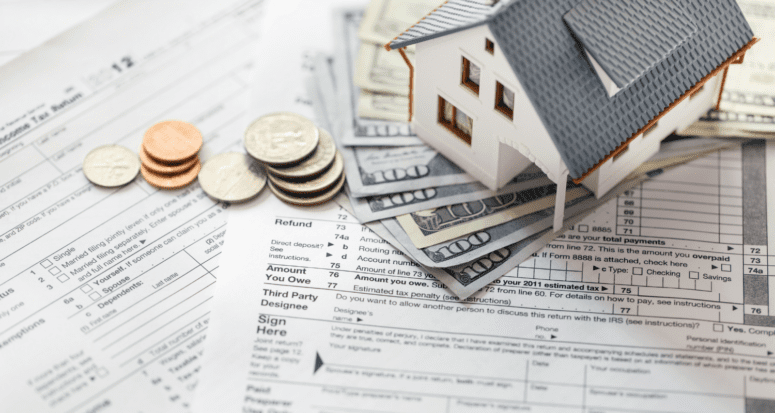What is Mill Rate: Minding the Math Behind Your Property Taxes
- Published on
- 5-6 min read
-
 Gina Rodrigues Contributing AuthorClose
Gina Rodrigues Contributing AuthorClose Gina Rodrigues Contributing Author
Gina Rodrigues Contributing AuthorGina is a freelance writer and editor who specializes in real estate and personal finance. She brings more than ten years of experience as a licensed agent and property investor. When she isn’t writing, she can be found tending to the sheep and chickens at her suburban homestead outside of Seattle. Gina holds a B.A. in English from California State University.
Your property tax bill just arrived, and after scanning the tax assessments you come across a term you’re unfamiliar with — mill rate.
The mill rate, sometimes referred to as mill levy or millage, is a method tax districts often use to express a locality’s property tax rate. The mill rate impacts a homeowner’s property tax bill as one of the variables in the equation used to calculate a property tax bill.
We asked property tax assessor Ken Brownlee of Mesa County, Colorado, to help us demystify mill rates and explain how this key variable plays a role in calculating property tax payments. “It’s actually quite simple,” Brownlee assures us. “But one has to understand that there are moving parts to the equation.”

What is a mill rate?
The term mill derives from the Latin mille, which translates into thousand. In the context of property taxes, one mill rate equates to a $1 tax levy for every $1,000 of a home’s assessed value. For example, a home assessed at $300,000 with a mill rate of 3 would be taxed $3 for every thousand dollars of the home’s value. The homeowner’s tax liability would be $900 — $3 multiplied by 300.
Who sets the mill rate?
The taxing authority, on behalf of the state and local government where a property is located, sets the mill rate for a home.
How is mill rate determined?
Public services such as schools, roads, libraries, and fire departments rely on property tax revenue to operate. Tax levies distribute the financial obligation of operating these public services among property owners within specific taxing districts.
When establishing a mill rate, a tax district first determines how much revenue they need to operate. Then the tax district calculates which portion of its budget will come from property tax revenue and divides the required property tax revenue by the total taxable value for real property within its jurisdiction.
Mill rates are usually an aggregate of different tax rates based on where your home is located.
Brownlee explains:
“Each taxing district, school district, city, fire, etcetera, could levy their own mill, and the total tax would be the sum of the various districts that apply to a specific property.”
Calculating your total property tax payment
Are you curious about how the mill rate affects your tax bill? Here’s how to factor in the mill levy and estimate how much property tax you’ll owe.
1. Determine your property’s assessed value
Reach out to your local assessor’s office, which sets taxable property values, to determine the assessed value the taxing agency has assigned to your home. According to a report by the National Conference of State Legislatures (NCSL), time frames between reassessments vary depending on state law. For example, in Nevada, reassessments can occur every one to ten years.
2. Ask about your state’s assessment rate
Not all jurisdictions tax 100% of a home’s value when calculating property tax payments. Each state mandates an assessment rate or the percentage of value used to determine the taxable portion of your property’s assessed value.
In Colorado, Brownlee notes that residential homes have an assessment rate of 7.15%. A $100,000 home, for example, would be taxed based on $7,150 of its value. Other states, such as Washington, have an assessment rate of 100%. A home valued at $100,000 would be taxed at its full market value.
The NCSL report also reasons “these [assessment] ratios are applied because they allow some flexibility with tax policy and provide a way to levy more or less tax on different types of property without using different tax rates.” For example, non-residential properties in Colorado are taxed at a 29% assessed ratio, more than four times the percentage of residential homes.
Contact your local assessor’s office or state revenue department to attain the assessment rate for your state.
3. Multiply your property’s market value by your state’s assessment rate and the mill levy
When making your property tax calculation, Brownlee advises us to convert the mill rate into decimal format. To do so, divide the mill rate by 1,000. For example, a mill rate of 8 converts to 0.008.
Then multiply your home’s assessed value (from step one) by your state’s assessment rate and the local mill levy. For example, if a home has a $500,000 value and is located in a state with a 7.15% assessment ratio and a mill levy of 8, you would multiply $500,000 by 7.15% by 0.008 (500,000 x 0.0715 x 0.008). The property tax for this home would be $286.
4. Add other local fees collected on your property tax bill
Additional fees that aren’t included in the mill levy may apply to your property tax bill. Brownlee says you’ll want to contact the local property tax office or taxing authority to inquire about other charges that may apply to your home.
For instance, in Brownlee’s Mesa County, homes in certain parts of the county are assessed an irrigation fee. And in King County, Washington, homeowners may be subject to a per-parcel surface water management fee.
5. Adjust your calculation based on qualifying property tax exemptions or credits
Individual states and jurisdictions offer property tax breaks in the form of exemptions or credits, which can reduce the tax liability for some homeowners. Contact your local taxing authority to inquire about available exemptions or credits in your area. Examples of property tax exemptions include:
- Senior citizen exemption
- Disability exemption
- Veteran exemption
- Homestead exemption
If you qualify for an exemption or credit, you’ll need to adjust your property tax calculations to account for the reduction.

Comparing property taxes between different states? Calculate the effective tax rate using the mill rate
If you’re looking to compare the tax rate in your jurisdiction to one in a different state, the NCSL report recommends using the effective tax rate instead of mill rates. That’s because comparing mill levies alone doesn’t take into account a state’s assessment ratio. One county may have a mill levy of 30 and an assessment rate of 10%, while a different county in another state has a mill rate of 12.5 and an assessment rate of 100%. How do you compare the overall tax rate of the two?
One method is to convert the tax rate into an overall percentage as an effective tax rate. The effective tax rate converts the tax payment into a percentage of the overall assessed value of a home without taking into account state assessment ratios. By converting the tax rate into a percentage of the value, you can accurately compare tax rates for different locations.
To calculate the effective tax rate, first, use the mill rate to determine the tax payment. Then divide that figure by the property’s assessed value.
For example, a home with a mill rate of 10, a 100% assessment ratio, and an assessed value of $500,000 has a tax bill of $5,000. To determine the effective tax rate, divide the tax bill by the assessed value. In this example, the home has an effective tax rate of 1% ($5,000 / $500,000 = 0.01, or 1%). Repeat this process for another location to compare the tax rates for both locations.
Mill rates are key to calculating your property taxes
When reviewing your property tax bill, keep in mind these key elements about the mill rate:
- In property tax calculations, one mill equates to one dollar per $1,000 of a property’s assessed value.
- Your mill rate varies depending on the location of your home and your taxing jurisdiction.
- You can calculate your property tax bill by dividing the mill rate by 1,000. Multiply that figure by your home’s market value. Multiply again by your state’s assessment ratio.
- If you’re comparing property tax between different districts and states, look at the effective tax rate instead of the mill rate.
Header Image Source: (topseller / ShutterStock)
